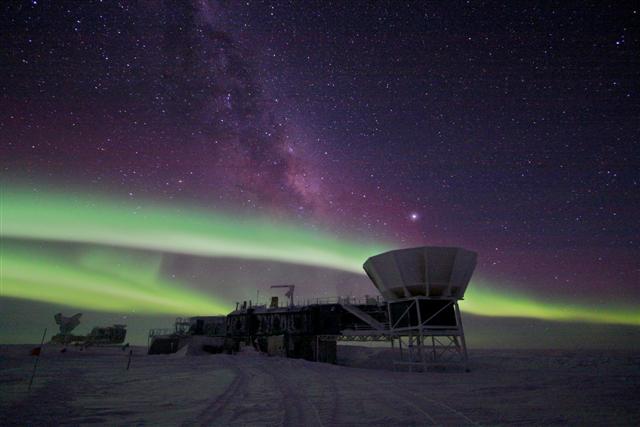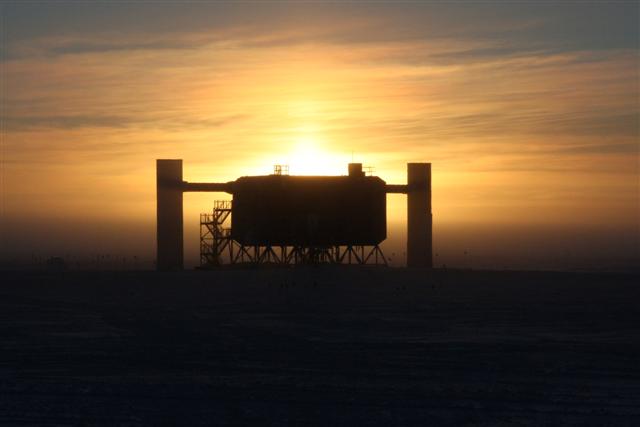Spotlight on astronomySouth Pole Telescope, IceCube to be featured in 24-hour live WebcastPosted April 3, 2009
Two National Science Foundation 
Photo Credit: Keith Vanderlinde/Antarctic Photo Library
The South Pole Telescope during the austral winter.
Scientists spending the winter at the U.S. Antarctic Program's most southerly research station will discuss their work on the South Pole Telescope (SPT) Located within a cubic kilometer of solid ice, IceCube is another major experiment hoping to learn more about neutrinos, high-energy particles that pass through the Earth from distant corners of the universe following such cosmic cataclysms as exploding stars. The observatories will be featured with many others in a 24-hour Webcast called "Around the World in 80 Telescopes." |



For USAP Participants |
For The Public |
For Researchers and EducatorsContact UsU.S. National Science FoundationOffice of Polar Programs Geosciences Directorate 2415 Eisenhower Avenue, Suite W7100 Alexandria, VA 22314 Sign up for the NSF Office of Polar Programs newsletter and events. Feedback Form |


